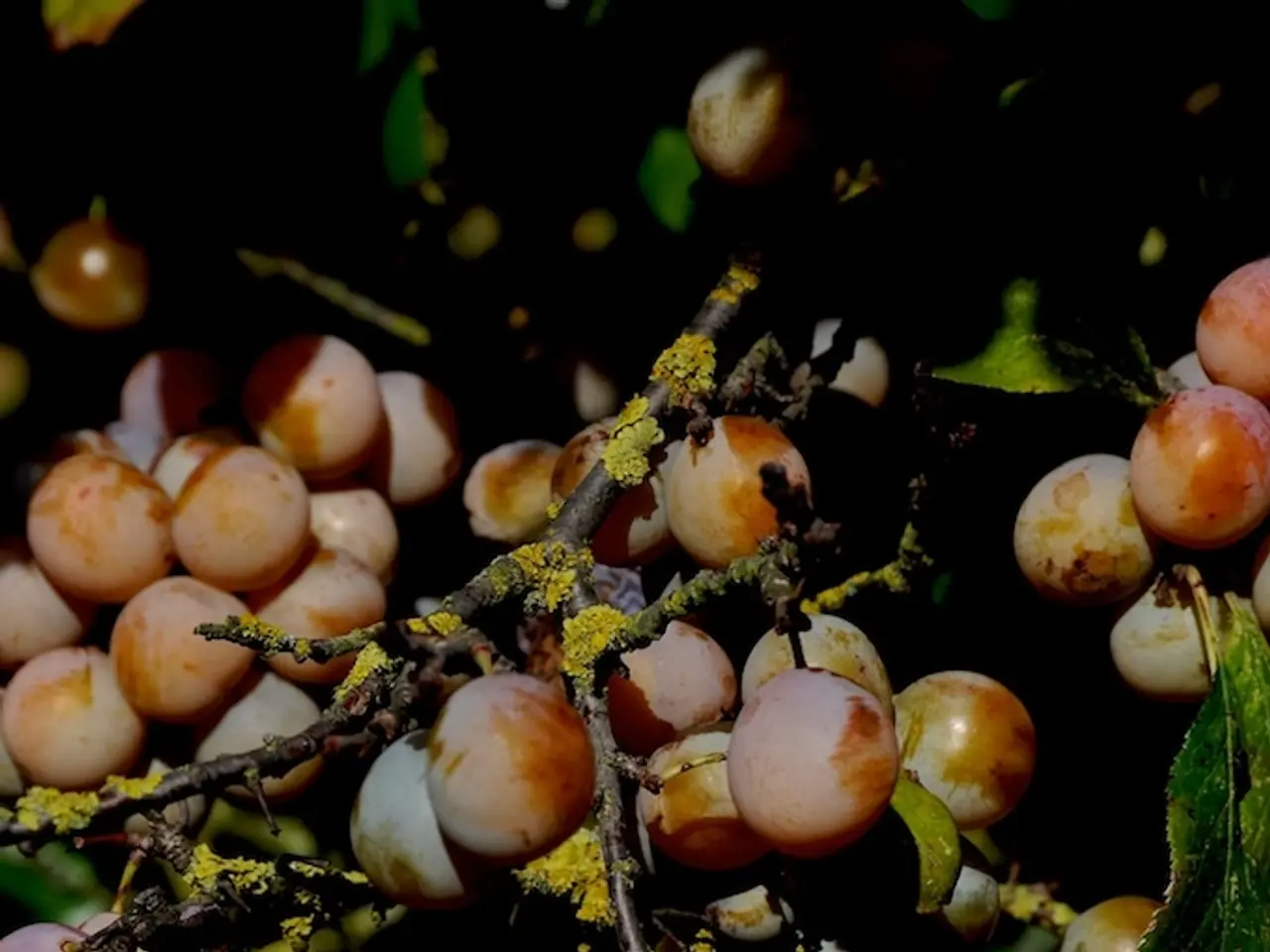Guide on Plum Cultivation
Plums are delightful fruits that can add a burst of flavour to your garden and your table. They come in various types, including sweet, cooking, damsons, gages, mirabelles, and sloes, each with its unique taste and texture.
Growing plum trees is a rewarding endeavour, especially for those with small gardens or even balconies, as many varieties can be grown as dwarf fruit trees. These trees thrive in a sunny spot with well-drained, fertile soil and moist but well-drained soil. Plant them during the winter when they are dormant for optimal growth.
However, plum trees are not without their challenges. They are prone to pests such as aphids, plum fruit moth, plum sawfly, wasps, and diseases like brown rot, bacterial canker, and silver leaf. To ensure a bountiful plum harvest, an integrated approach to cultivation and pest management is essential.
Cultural Practices & Sanitation
In the realm of cultivation, pruning during the dormant season can help improve air circulation and sunlight penetration, reducing the incidence of diseases like silver leaf and brown rot. Remove and destroy infected or infested plant material such as cankers, mummified fruit, or damaged branches to break pest and disease cycles.
Avoid excessive nitrogen fertilization that leads to succulent growth vulnerable to bacterial canker and fire blight. Remove any suckers from the base of the tree, as these can harbour infections.
Pruning
Pruning plum trees is a crucial aspect of their care. Make pruning cuts at least 8 to 12 inches below any visible infected tissue to reduce bacterial canker and other fungal diseases. Disinfect tools with a bleach solution or alcohol between cuts to prevent the spread of diseases.
Insect Management
Monitor your plum trees regularly for pests such as plum moth, plum sawfly, and aphids. Control these pests using targeted insecticides or organic controls when necessary, but avoid spraying during bloom to protect pollinators like bees. Managing aphids reduces the spread of bacterial diseases carried by these insects.
Disease Control
Apply fungicides preventively to reduce fungal infections like brown rot and silver leaf, following recommended schedules and ensuring good spray coverage. Removing infected twigs and branches with cankers and burning or burying them limits bacterial canker spread.
Other Practices
Maintain good orchard hygiene by promptly removing fallen fruit and debris to reduce overwintering pest and pathogen reservoirs. Select resistant plum varieties where available to reduce susceptibility to diseases.
By integrating these cultural, chemical, and sanitation strategies, plum growers can effectively prevent and manage the common pests and diseases impacting plum trees. Specific treatment timing and products should be selected based on local extension recommendations and the particular pest or disease problem encountered.
With the right care and attention, you can enjoy the sweet, juicy fruits of your labour and share the bounty with family and friends. Happy plum growing!
[1] University of California Agriculture and Natural Resources. (2021). Plum Production in California. Retrieved from https://anrcatalog.ucanr.edu/Details.aspx?itemNo=8219
[2] Cornell University Cooperative Extension. (2021). Plum Culture and Management. Retrieved from https://extension.cornell.edu/fruit-vegetable-extension/plum-culture-and-management/
[3] Washington State University Extension. (2021). Plum Culture and Management. Retrieved from https://extension.wsu.edu/tree-fruit/orchard-management/plum-culture-and-management/
Developing a home-and-garden with plum trees can add a delightful touch to your lifestyle, especially since many plum varieties can thrive in small spaces, such as dwarf fruit trees. To ensure a healthy plum harvest, follow cultural practices like pruning during the dormant season, avoiding excessive nitrogen fertilization, and maintaining good orchard hygiene, as well as managing pests and diseases through regular monitoring, targeted insecticides, and fungicides.




